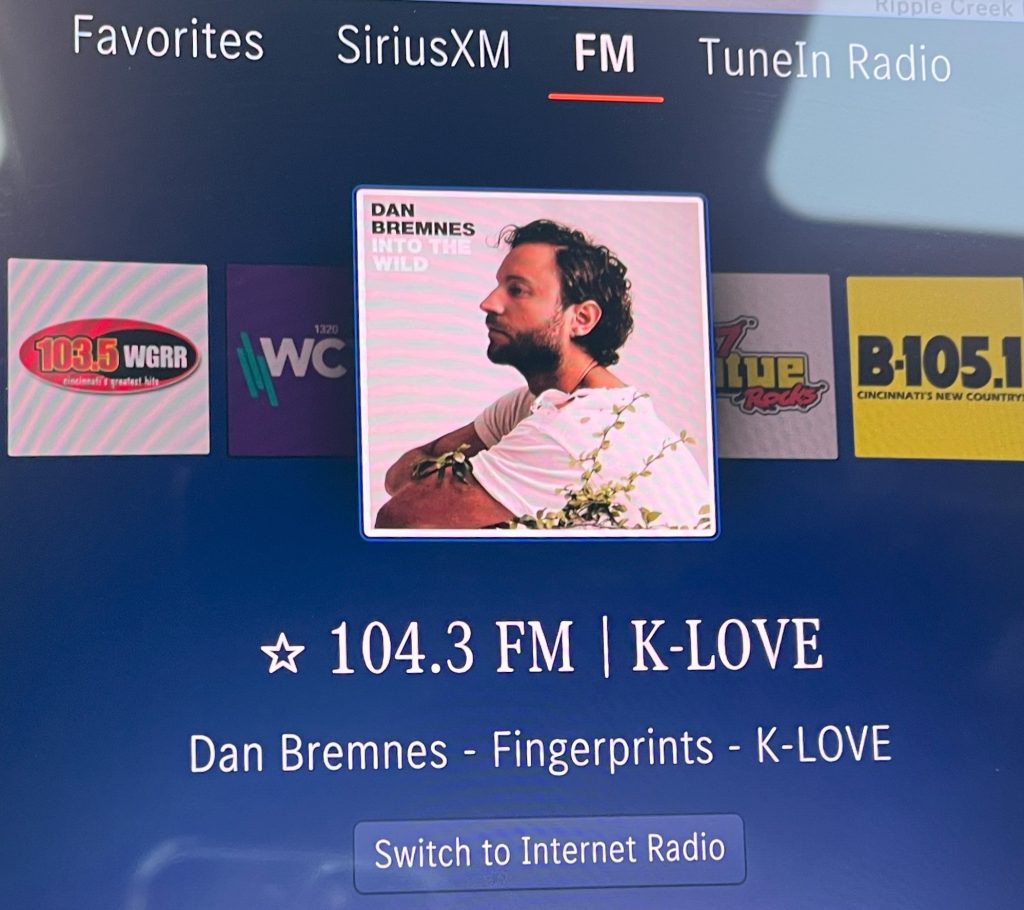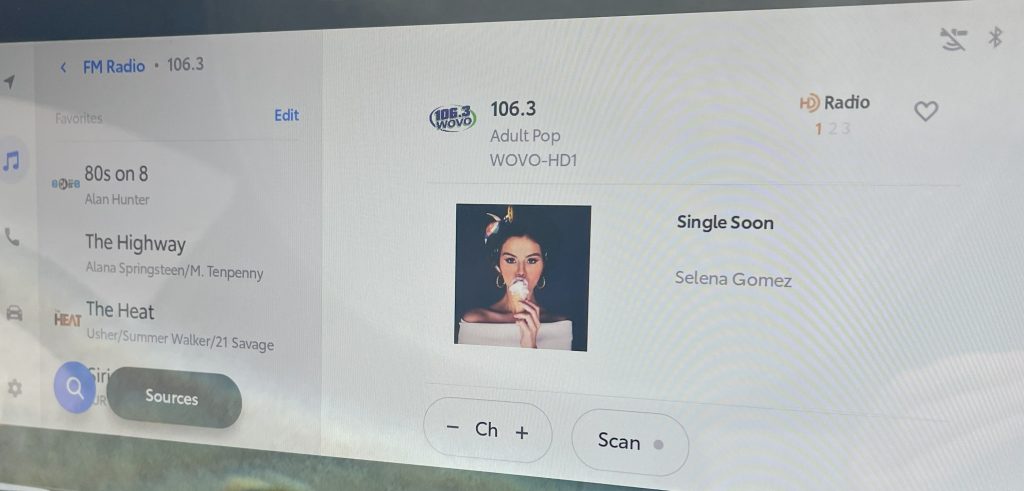HD Radio is a digital radio technology that allows FM and AM stations to broadcast high-quality audio and additional content over traditional radio frequencies.
HD Radio is not an acronym for “high-definition”. It is simply a trademarked term for the technology. It was developed by iBiquity Digital Corporation, which was later acquired by DTS and then by Xperi Corporation.
HD Radio works by transmitting a digital signal along with the analog signal on the same frequency. The digital signal uses the unused channels adjacent to the analog channel, which are normally reserved for interference protection. In-band on-channel, also referred to as IBOC, allows broadcasters to add the digital signal to their existing licensed frequencies. You can see the analog FM center frequency has two adjacent digital “shoulders” where the HD Radio signal is carried.

HD Radio receivers can decode both the analog and the digital signals, and switch between them as needed. If the digital signal is weak or unavailable, the receiver will automatically tune to the analog signal, ensuring uninterrupted listening. HD Radio receivers can also display text and graphical information, such as song titles, artist names, album art, station logos, traffic updates, and weather alerts, on their screens.
One of the main benefits of HD Radio is that it offers more consistent sound quality and reduced noise compared to analog radio. HD Radio can deliver compressed digital audio for FM stations, and FM-like sound quality for AM stations. HD Radio also eliminates the static, hiss, and pops that are common in analog radio reception.

Maybe the greatest benefit of HD Radio is the ability to multicast. Now stations can have a digital version of their main FM signal, as well as HD2, HD3, and HD4 programming. The digital bandwidth available can be allocated across the various subchannels based on the type of programming and fidelity needed. Some stations choose to broadcast higher quality audio on HD1 and HD2 only, while others created a combination of music and talk across all four, with the talk content requiring substantially less allocated bandwidth. HD Radio multicasting allows stations to provide more variety and choice to listeners, without any subscription fees.

HD Radio uses a proprietary audio compression format called HDC (High-Definition Coding) transmitted using OFDM (orthogonal frequency-division multiplexing). HDC is based upon but not compatible with MPEG-4 codecs.
HD Radio is a digital radio technology that enhances the listening experience and offers more options for AM and FM stations and their audiences. HD Radio is a simple and cost-effective way to upgrade the radio broadcasting and receiving systems, and to enjoy the benefits of digital sound and content.
Radio operators can create more engaging visual content when broadcasting in HD Radio. This is very important to keep local radio relevant, especially in the vehicle, where most of the listening still occurs. With more and more products competing for space in the radio “infotainment” space, radio is still the most listened to source in the car. To stay competitive, HD Radio allows the radio product to be presented in a way that is similar to other sources like, Apple CarPlay, Android Auto and built in apps like Spotify, Pandora, and Amazon Music.

Other thoughts:
There is, of course, a debate around the longevity of AM radio. HD Radio also allows for an all-digital transition plan for those AM stations that want to add improved audio and visual components to their broadcasts. There is, however, still a very large audience for the traditionally broadcast AM formats. Folks that may not be thrilled if their AM radios, in and outside of the car, were turned into paper weights.
Another hot topic these days is the “Connected Car.” Most vehicles being manufactured currently, have a full-time internet connected modem (or two) allowing for internet content to be delivered live to the vehicle. This ranges from streaming service apps that are native to the cars operating system, to safety and emergency services, to additional metadata on analog radio stations. There are built in apps of all kinds. I believe you will start to see the car operating systems compete with the likes of Apple CarPlay and Android Auto, with some manufacturers already talking about excluding this connectivity in favor of their own options.

In my line of work, these topics are part of my every day. Please let me know if there are other topics related to the broadcast industry you would like discussed. I will soon present a post to shed some light on the DTS AutoStage technology. This exciting collection of “connected car” products is part of Xperi. There is some information here to whet your appetite: https://dts.com/autostage/
DTS AutoStage is already in Hyundai’s, Kia’s, Mercedes, and several other manufactures being announced soon.
Want to know more? Try these sources:
https://hdradio.com/
https://en.wikipedia.org/wiki/HD_Radio


